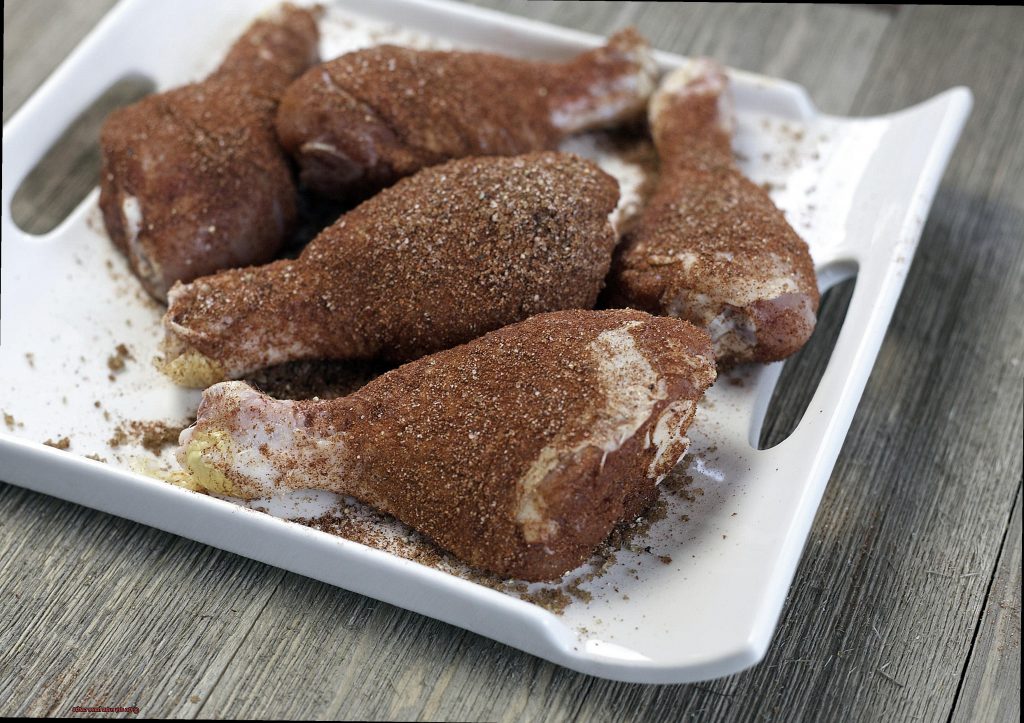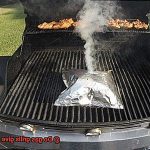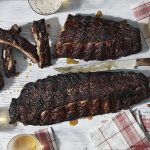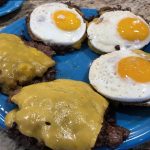Do you love the mouthwatering aroma of barbecue and smoked meats? Then you’re probably no stranger to dry rubs – those delectable spice mixes that add a burst of flavor to your meat before cooking. But here’s the million-dollar question: do dry rubs have carbs?
With low-carb and keto diets gaining popularity, people are paying closer attention to the nutritional content of their food. Dry rubs are often marketed as a healthier, low-carb alternative to traditional barbecue sauces. But is that really true?
In this blog post, we’ll take a deep dive into the world of dry rubs and their carb content. We’ll explore the ingredients commonly found in dry rubs and how they impact the carb count. Plus, we’ll also discuss how dry rubs compare to wet marinades when it comes to carb content.
Whether you’re a seasoned pitmaster or a newbie griller, knowing the carb content of your dry rubs is crucial for maintaining a healthy diet. So let’s get started on this delicious journey and find out if your favorite dry rub has any sneaky carbs hiding in there.
Contents
The Different Types of Dry Rubs
Spice up your grilling game with the different types of dry rubs available in the market. Dry rubs are a blend of spices, herbs, and sometimes sugar or salt that are rubbed onto the surface of the meat before cooking. However, not all dry rubs have the same carb content. In this post, we’ll explore the different types of dry rubs and their respective carb contents.
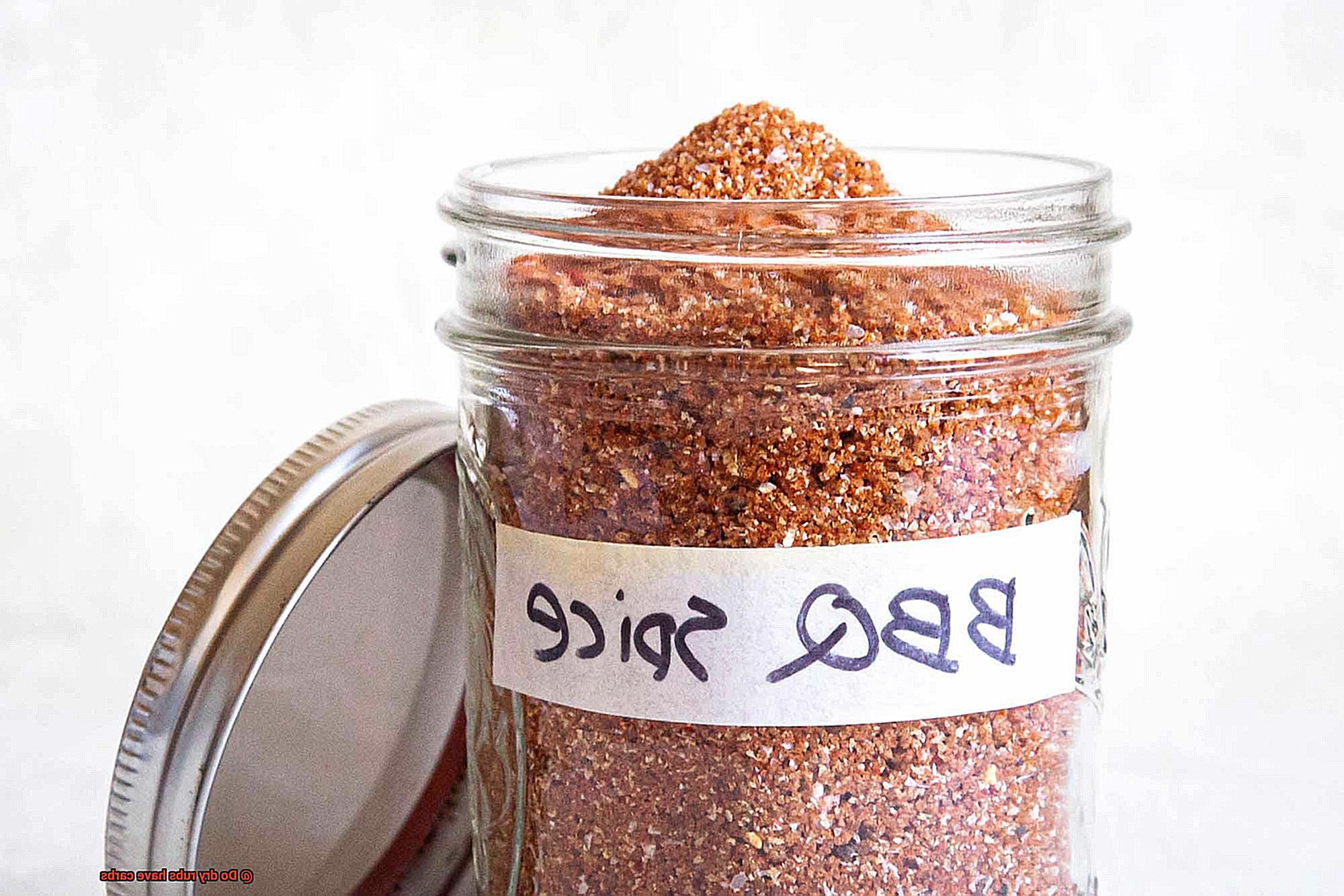
Cajun Dry Rubs
If you’re a fan of spicy food, then Cajun dry rubs are perfect for you. These rubs typically contain a blend of paprika, cayenne pepper, onion powder, garlic powder, and other spices that bring heat and flavor to your meats. Cajun dry rubs are commonly used on chicken, seafood, and pork. Moreover, they are low in carbs, making them suitable for individuals on a low-carb diet.
Barbecue Dry Rubs
Barbecue dry rubs are a classic among grill masters. They usually contain brown sugar, paprika, chili powder, garlic powder, onion powder, and other spices that give your meats a sweet and smoky flavor. Barbecue dry rubs are commonly used on ribs, brisket, and pork shoulder. However, if you’re watching your carb intake, make sure to check the label carefully as some barbecue dry rubs may have added sugar.
Jerk Dry Rubs
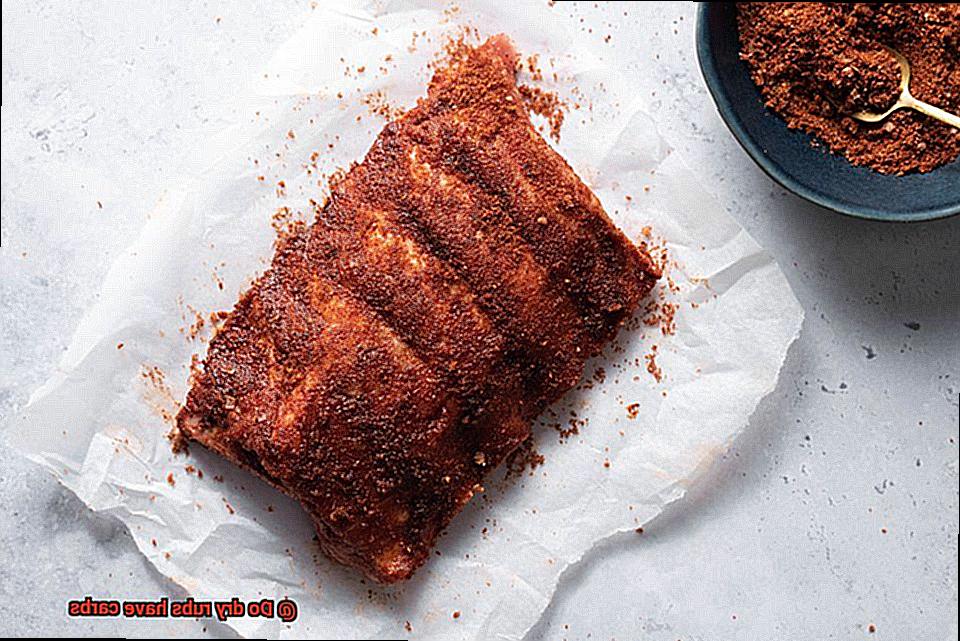
Add a Caribbean flavor to your meats with jerk dry rubs. This Jamaican-style spice blend includes allspice, thyme, cinnamon, nutmeg, and other spices that bring a unique taste to your meats. Jerk dry rubs are commonly used on chicken and pork. The best part? Jerk dry rubs are low in carbs.
Mexican Dry Rubs
If you love spicy food with a Mexican twist, then Mexican dry rubs are perfect for you. These rubs usually include cumin, chili powder, garlic powder, oregano, and other spices that add a spicy kick to your meats. Mexican dry rubs are commonly used on beef and chicken. And the good news is that they are also low in carbs.
Italian Dry Rubs
Give your meats an Italian twist with Italian dry rubs. These seasoning blends include oregano, basil, thyme, and rosemary and are often used in Mediterranean dishes. Italian dry rubs can be used on various meats and vegetables to add an Italian flavor. However, they may contain added salt, so make sure to check the label carefully.
In conclusion, dry rubs are an excellent way to add flavor and texture to your grilled or smoked meats and vegetables. However, not all dry rubs have the same carb content. By reading the label carefully and checking the nutritional information, you can make informed decisions about which dry rubs to use and how much to use to stay within your dietary goals.
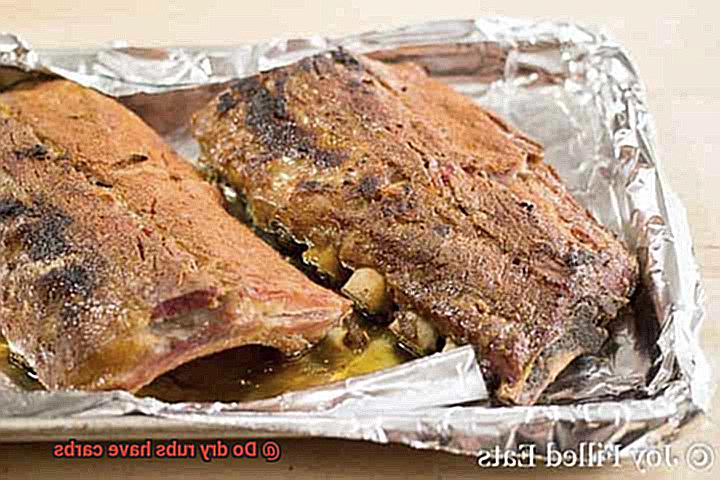
Do All Dry Rubs Have Carbs?
If so, you might be wondering about the carb content of these flavorful seasonings. Well, as an expert on the subject, I can confidently tell you that not all dry rubs have carbs. However, it’s crucial to read labels carefully and choose wisely to avoid those that do.
When it comes to dry rubs, their carb content varies significantly depending on their ingredients and fillers. Some dry rubs use natural herbs and spices as their main ingredients, which contain little to no carbs. On the other hand, others use sugar-laden additives like brown sugar or honey, which can significantly increase their carb content.
In addition to the sugar content, some dry rubs may include fillers like cornstarch or flour to improve their texture or consistency. Unfortunately, these fillers can also add a significant amount of carbs to the mix. To avoid this, look for dry rubs that use only natural ingredients.
If you’re watching your carb intake, making your own low-carb dry rub is a great solution. By mixing together your favorite herbs and spices like paprika, garlic powder, onion powder, cumin, and more, you can create a delicious and healthy seasoning blend that won’t derail your diet.
Common Ingredients in Dry Rubs
These blends of herbs, spices, and flavorings are a popular way to add depth and complexity to your grilling game. And if you’re watching your carb intake, fear not – dry rubs are typically low in carbohydrates. But it’s important to know which common ingredients can add carbs to your rub.
First and foremost, let’s review the key players in most dry rub recipes. Salt, pepper, paprika, chili powder, cumin, garlic powder, onion powder – these are the staples that give dry rubs their signature flavor. But there’s one ingredient that can trip up low-carb eaters: brown sugar. While only used in small amounts to add sweetness and create a caramelized crust on the meat, brown sugar does add carbs.
There are plenty of low-carb dry rub recipes out there that use alternative sweeteners like stevia or erythritol. With a little research, you can find a rub that fits your dietary needs without sacrificing flavor.
One other thing to watch out for when perusing ingredient labels is thickeners. Some dry rubs contain cornstarch or other thickening agents that can add unwanted carbs. So if you’re unsure, be sure to choose a low-carb option or make your own at home.
How to Read the Label and Check Nutritional Information
If you’re watching your carb intake, it can be challenging to determine whether or not dry rubs have carbohydrates. However, reading the label and checking nutritional information can help you make informed decisions about what you’re putting into your body. Here are some tips to help you do just that.
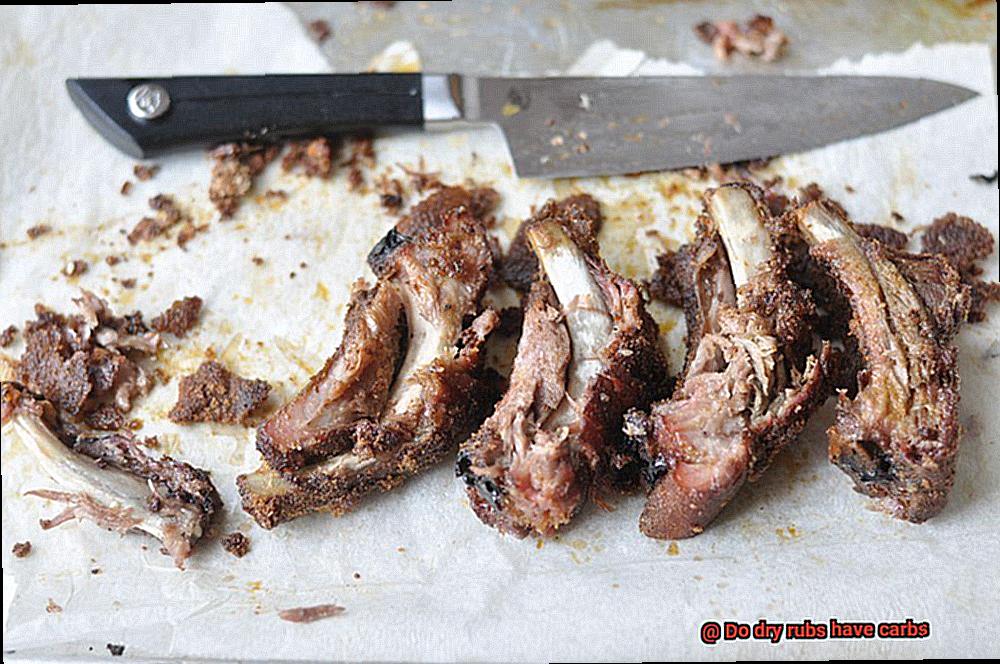
Serving Size
The first step in checking nutritional information is to look for the serving size listed on the label. This will determine how much of the dry rub is considered one serving and will help you calculate the amount of carbs you’ll be consuming. Keep in mind that if you use more than one serving, you’ll need to adjust the nutritional values accordingly.
Total Carbohydrates
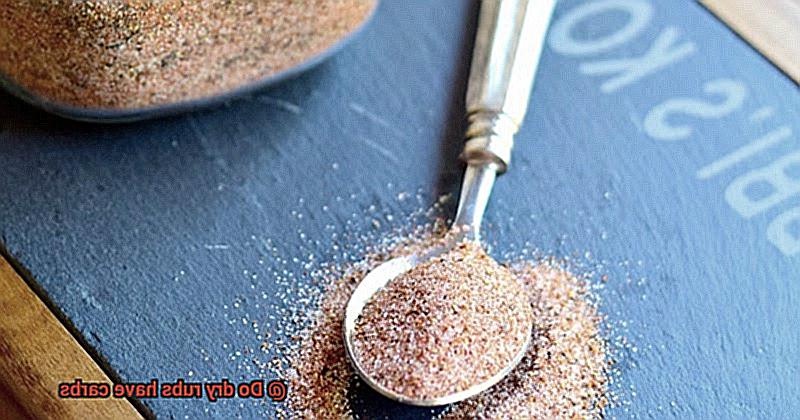
Next, check the total carbohydrates listed in grams on the label. This includes both fiber and sugar. If you’re following a low-carb diet, it’s essential to keep this number as low as possible. Dry rubs with high carbohydrate content may not be the best choice for those who are watching their carb intake.
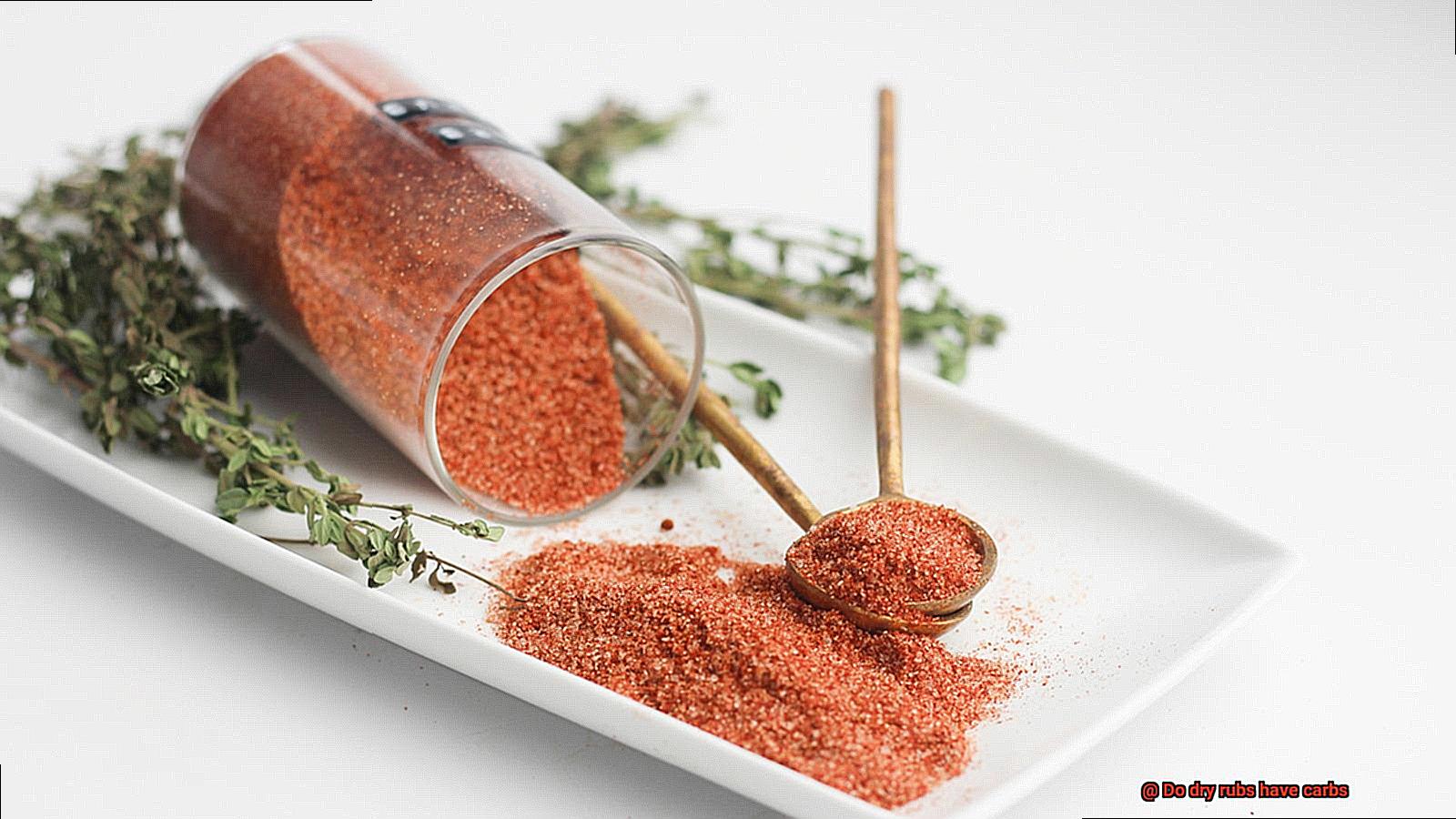
Ingredient List
It’s also important to examine the ingredient list on the label. Some dry rubs may contain ingredients that are high in carbs, such as sugar or flour. If you’re trying to limit your carb intake, it’s best to avoid these types of dry rubs or use them sparingly. Instead, opt for dry rubs made with high-quality ingredients and minimal additives.
DV
Another useful tool when checking nutritional information is the percent daily value (%DV) listed on the label. This indicates how much of a particular nutrient is in one serving of the product based on a 2,000 calorie diet. For example, if a dry rub has 10% DV for carbohydrates, that means one serving contains 10% of the recommended daily intake for carbs.
Overall Nutritional Value
When selecting dry rubs, it’s vital to consider their overall nutritional value. A high-quality dry rub will be made with whole food ingredients and minimal additives. Be wary of dry rubs that contain artificial flavors, colors, or preservatives, as these can negatively impact your health.
Low-Carb Alternatives for Dry Rubs
If you’re on a low-carb diet, you might be wondering how to add flavor to your meat without adding carbs. Traditional dry rubs often contain high amounts of sugar and other carbs, making them unsuitable for your diet. But don’t worry. As an expert in low-carb alternatives for dry rubs, I have some tips to help you out.
Herbs and spices are always a great option for seasoning your meat. A combination of garlic powder, cumin, chili powder, paprika, and black pepper can add depth and flavor without any carbs. And the best part? You can mix and match different herbs and spices to create your own unique blend.
If you’re craving something sweet, sugar substitutes like stevia, erythritol, or monk fruit extract can help you get that sweet and savory balance in your dry rub. These substitutes are carb-free, so you won’t have to worry about ruining your low-carb diet.
For those who prefer a more savory flavor, a combination of salt, pepper, and other herbs like rosemary or thyme can create a delicious crust on your meat. This option is perfect for those who want to keep their seasoning simple but still flavorful.
If you’re feeling more adventurous, marinades are another great option. You can use ingredients like vinegar, olive oil, lemon juice, and herbs and spices to infuse your meat with flavor. Marinating your meat before grilling it will give it a delicious taste while keeping it low-carb.
Tips for Using Dry Rubs to Keep Carb Intake Low
Dry rubs might be the solution. Dry rubs are a blend of herbs and spices that can add delicious flavor without adding carbs, as long as you choose the right ones. Here are some tips for using dry rubs to keep carb intake low:
Read the labels
Before using any pre-made dry rubs, make sure to read the label carefully. Some may contain added sugars or other carb-heavy ingredients that can quickly add up. Look for options that are low in sugar and carbohydrates.
Make your own
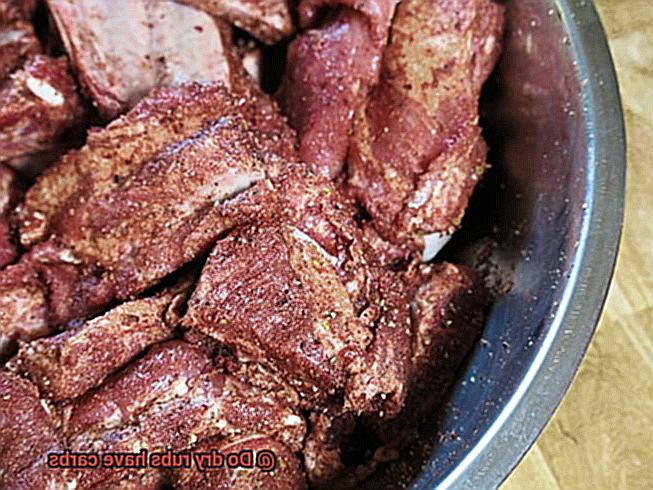
Making your own dry rubs at home is a great way to have more control over the ingredients. Stick to herbs and spices without added sugars or starches, such as paprika, cumin, chili powder, garlic powder, onion powder, and black pepper. You can also experiment with different flavor combinations to find what works best for you.
Use sparingly
While it can be tempting to load up on seasoning, excess dry rub can add unnecessary carbs to your meal. Use just enough to enhance the flavor without overpowering the meat. Remember that a little bit goes a long way.
Pair with low-carb sauces
Consider pairing your dry rubs with low-carb marinades or sauces to add extra flavor without adding unnecessary carbs. For example, try pairing a spicy dry rub with a tangy vinegar-based sauce or a smoky dry rub with a creamy avocado sauce.
Use a low-carb binder
When applying dry rubs to your meat, consider using a low-carb binder like mustard or olive oil. This can help the seasoning adhere to the meat without adding significant carbs. Avoid using honey or other high-sugar binders that can quickly increase your carb intake.
Benefits of Using Dry Rubs on Foods
These versatile seasonings are packed with flavor and offer several benefits when it comes to cooking.
Firstly, dry rubs are incredibly versatile. They can be used on a variety of meats, vegetables, and even tofu. This means you can use the same dry rub on multiple dishes, saving time and making meal planning easier. Plus, dry rubs are perfect for those who want to experiment with different flavor combinations.
One of the most significant benefits of using dry rubs is that they can help to tenderize meat. Many dry rubs contain salt or other ingredients that help to break down the proteins in meat, making it more tender and juicy. This is especially useful when grilling tougher cuts of meat, such as brisket or flank steak.
Dry rubs also create a delicious crust on the outside of your food when cooked correctly, adding texture and depth to your dish. This crust is especially desirable when grilling or smoking meats.
Unlike marinades, dry rubs don’t contain any liquid ingredients, so they won’t make your food soggy. This means you can achieve perfect texture and flavor in your dishes every time.
In addition, most dry rubs are made with herbs and spices, which are low in calories and carbs. This makes them an excellent option for anyone who is watching their carb intake. You can enjoy bold flavors without worrying about added sugars or carbs.
wdGeRG-8HvY” >
Conclusion
In summary, dry rubs are a versatile and mouth-watering way to jazz up your grilled or smoked meats and veggies. As low-carb and keto diets continue to gain popularity, it’s crucial to be mindful of the nutritional value of your food, including dry rubs. While some brands may contain sneaky added sugars or fillers that can pack on the carbs, others are crafted with natural herbs and spices that won’t derail your dietary goals.
By scrutinizing labels and checking nutrition facts, you’ll be able to make informed choices about which dry rubs to use and how much to apply. And if you’re feeling adventurous, whipping up your own low-carb blend is a fun and rewarding option for those who want total control over their ingredients.
Aside from their delicious taste, dry rubs offer a host of cooking benefits such as tenderizing meat, creating a tantalizing crust on the outside of your dish, and adding delightful texture and complexity to your meals. Plus, they’re low in calories and carbs – making them an ideal choice for anyone watching their carb intake.
So, go ahead – spice up your life (and your food.) by experimenting with different dry rub flavors on your next grilling or smoking adventure.

